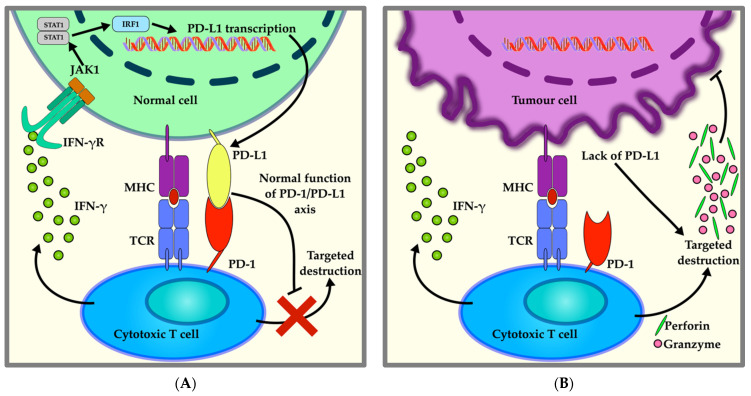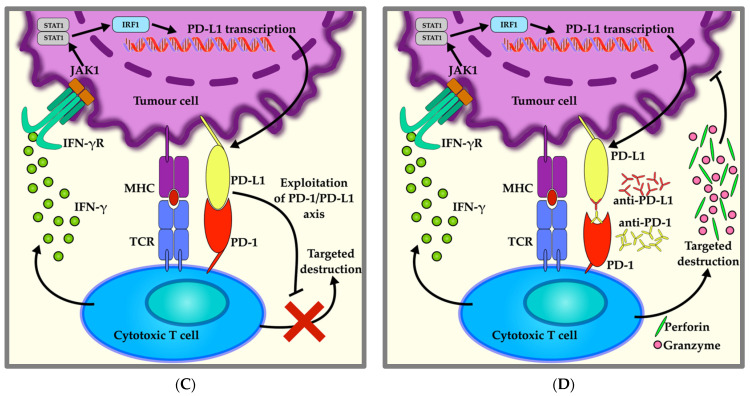Figure 1.
Immune targeting of cells by cytotoxic T cells: (A) Mechanism of immune tolerance of a native cell by the activation of the PD-1/PD-L1 axis. A T cell is activated by an antigen presented on a major histocompatibility complex (MHC) molecule on the surface of the cell. This triggers the release of inflammatory cytokines, such as interferon gamma (IFN-γ), that bind its receptor (IFN-γR) on the cell membrane, upregulating the expression of PD-L1. The interaction between PD-L1 and PD-1 on the T-cell surface works as a mechanism of cell recognition and promotes immune tolerance, preventing the destruction of the cell. (B) Mechanism of immune targeting of a tumour cell. Conversely, when the cytotoxic T cell recognizes the antigen presented on an MHC, but no PD-L1 is expressed, the release of IFN-γ and cytolytic mediators (perforin and granzymes) results in (tumour) cell elimination. (C) Mechanism of immune evasion of the tumour cell by exploiting PD-1/PD-L1 axis. The cytotoxic T-cell activation recognizes the tumour antigen presented on its MHC, but PD-L1 transcription is activated by IFN-γ. PD-L1 inhibits anti-tumour activity of the cytotoxic T cell. (D) Mechanism of PD-1/PD-L1 blockade by anti-PD-1 or anti-PD-L1 immune checkpoint inhibitors (ICIs). The antibodies block the interaction between PD-1 and PD-L1, preventing inhibition of cytotoxic T-cell antitumor activity and triggering the release of perforin and granzymes for the elimination of the tumour cell and thereby surpassing the PD-1/PD-L1 blockade.


